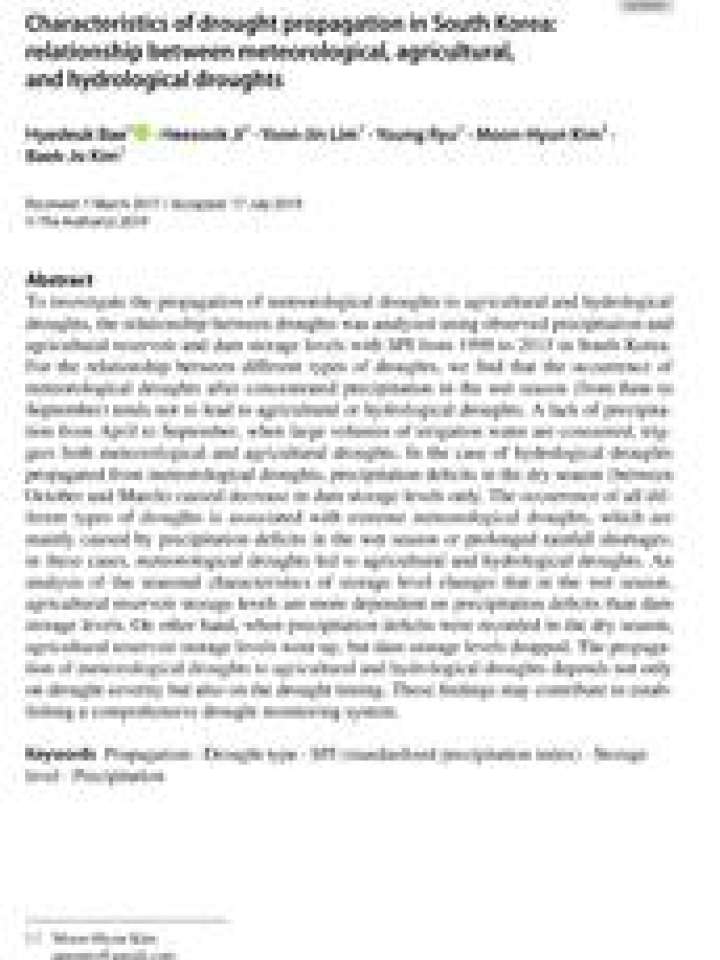Characteristics of drought propagation in South Korea: relationship between meteorological, agricultural, and hydrological droughts
To investigate the propagation of meteorological droughts to agricultural and hydrological droughts, the relationship between droughts was analyzed using observed precipitation and agricultural reservoir and dam storage levels with SPI from 1998 to 2015 in South Korea. For the relationship between different types of droughts, we find that the occurrence of meteorological droughts after concentrated precipitation in the wet season (from June to September) tends not to lead to agricultural or hydrological droughts. A lack of precipitation from April to September, when large volumes of irrigation water are consumed, triggers both meteorological and agricultural droughts. In the case of hydrological droughts propagated from meteorological droughts, precipitation deficits in the dry season (between October and March) caused decrease in dam storage levels only. The occurrence of all different types of droughts is associated with extreme meteorological droughts, which are mainly caused by precipitation deficits in the wet season or prolonged rainfall shortages; in these cases, meteorological droughts led to agricultural and hydrological droughts. An analysis of the seasonal characteristics of storage level changes that in the wet season, agricultural reservoir storage levels are more dependent on precipitation deficits than dam storage levels. On other hand, when precipitation deficits were recorded in the dry season, agricultural reservoir storage levels went up, but dam storage levels dropped. The propagation of meteorological droughts to agricultural and hydrological droughts depends not only on drought severity but also on the drought timing. These findings may contribute to establishing a comprehensive drought monitoring system.
Explore further
